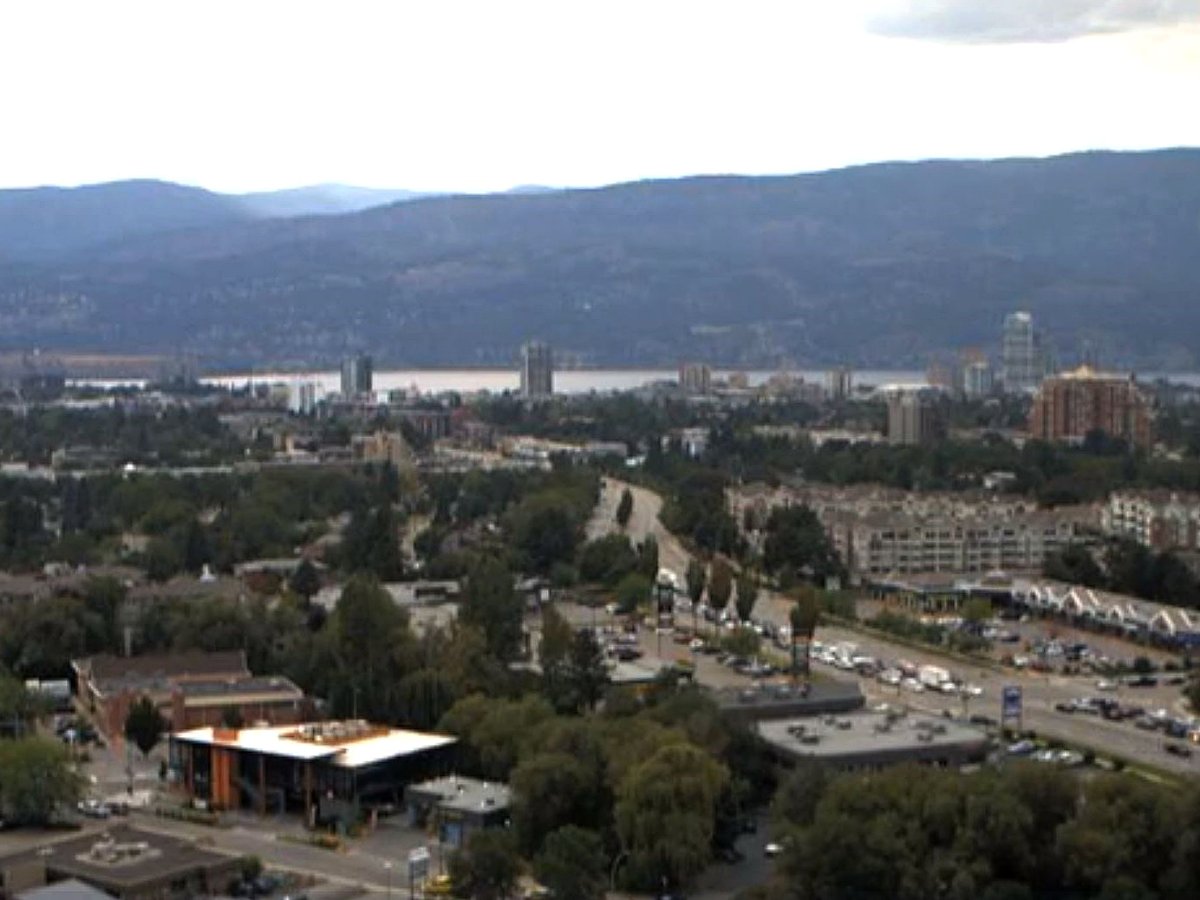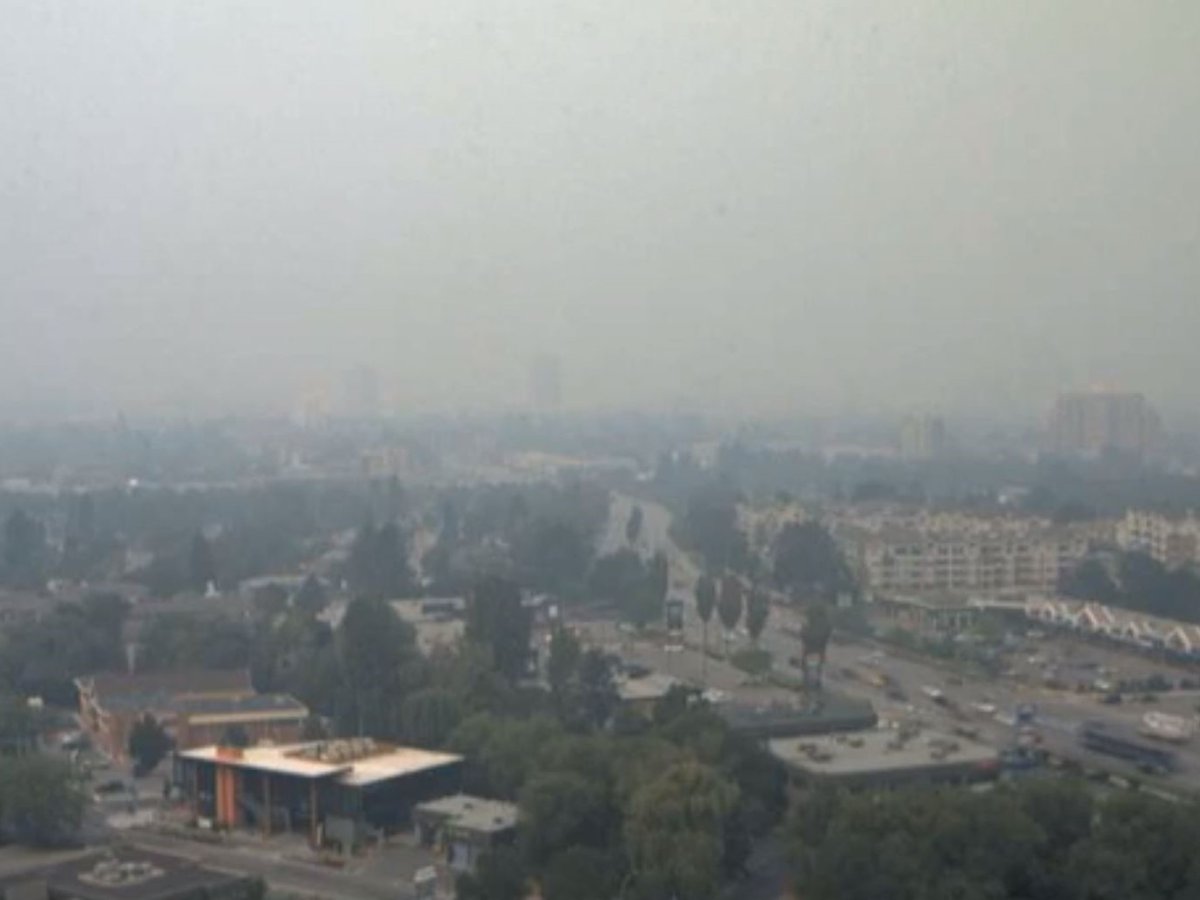A thick blanket of smoke settled over the Okanagan valley as summer barrelled into B.C., with record-high temperatures and a series of intense wildfires.

Deeply diminished air quality and various levels of government flagging hazardous pollution levels aren’t new to Okanagan summers.
But just like the heat and the wildfires, this year brought on some unprecedented changes in breathable space.
Ben Weinstein, an air quality meteorologist with B.C.’s ministry of environment, pulled some data that offers better insight into what people are facing in the Central Okanagan, and how this year stacks up against previous years known to be particularly bad for smoke.
“The fire season around Kelowna has been about as long as the 2017 fire season, to date, but it has been smokier. Levels of smoke this year are more akin to the 2018 fire season,” said Weinstein.
”We are getting a longer fire season with higher levels of smoke.”
Air quality reports rely on a PM2.5 rating, which looks at fine particulate matter or the tiny particles that, because of their small size, become suspended in the air.

Get breaking National news
It’s formed from incomplete combustion processes, like wood burning in forest fires, and through chemical reactions in the air. For more information about the effects of wildfire smoke, visit the B.C. Centre for Disease Control.

The provincial air quality objective (AQO) for PM2.5 is a 24-hour average value of 25 ug/m3.
In Kelowna, as of Aug. 19, there had been 23 days where levels of PM2.5 exceeded the provincial air quality objective.
On Aug. 19 in 2017, there had been 18 days where levels of PM2.5 exceeded the provincial AQO.
On Aug, 19 in 2018 there had been 11.
There have been 13 days where levels of PM2.5 exceeded double the provincial AQO (50 ug/m3).
On Aug. 19 in 2017, there had been 10 days. In 2018, there had been eight days.

Finally, as of Aug. 19, there have been eight days this year where levels of PM2.5 exceeded four times the provincial AQO (100 ug/m3).
Comparatively, in 2017, there had been zero days, and in 2018 there had been five.
“This has been a rough summer for Kelowna, Kamloops, Vernon and other surrounding areas,” said Weinstein.
And, he added, prolonged exposure isn’t good.
“There are adverse health effects, like aggravated asthma and increased respiratory symptoms. Particulate matter can affect lungs and heart, it hasn’t been an easy summer for people in the Okanagan,” he said.
All that bad air may soon be cleared, however.
“There is some relief coming Sunday and Monday in the form of precipitation occurring later this weekend,” he said. “It’s starting Saturday night and carrying on through Monday.”

Weinstein said Kelowna may not get much of the rain, but the more that falls on neighbouring wildfires, it’ll still be better for the shared air quality.
After that, though, all bets are off. Forecasts are predicting a warmer and drier entry into fall and that may stretch out fire season.
To stay on top of the latest with smoke, the public can subscribe to receive air quality notifications from the province.









Comments